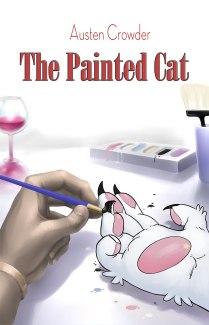Most Embarrassing Google Search, and Furries on Seeker Network – NEWSDUMP (9/7/15)
by Patch O'Furr
Headlines, links and little stories to make your tail wag. Guest posts welcome. Tips: patch.ofurr@gmail.com.

Me and Zarafa at the How Weird Street Faire.
SFGate looked at a map of the “most embarrassing Google searches” in the USA and found me.
(Appeared in photo #9.) “Furries” is supposedly searched a lot in Wyoming. The map also shows who searched for: Bronies, Nickelback Lyrics, Dog Clothes, Meth Recipe… Who knows if it’s really real data, but you can tell they had fun. But not as much as I did in the pic. Sorry guys, not embarassed in the slightest!
Playwright fictionalizes the 2014 MWFF chlorine attack, for a story exploring identity.
“The sixth Chicago Fringe Festival, opening tonight, brings zombies, victims, and furries to town.” Here’s the festival page dedicated to the play. I confess I only had a minute to look into this and the play’s Indiegogo page. I have a rule – I assume that any “furry” story that uses cheap halloween costumes is probably bad storytelling. Misinformed exploitation pieces often aim for humor at our expense, and they fail because they lack authenticity. Well, in this case, I may be proven wrong. I think this festival is prestigious, and: ‘He’s worked to keep it balanced—”not other-ing the community”‘ – says Corbeau at Furstarter. (It’s so great to have more than one eye on this stuff – please furries, make more blogs!)
Furry Migration gets a nice feature.
“…Where being weird is a good thing.” The article’s just a standard introduction, but the video lets several fursuiters speak and dance in a charming way.
Furries at Bubonicon in New Mexico.
A nice exploration by a columnist who investigates the con and meets a lot of different sci fi fan characters, including a few extra fuzzy ones.
A film maker was commissioned to make a documentary for Seeker network- and he started at reddit’s r/furry.
In March 2015, Discovery launched a new network, Seeker. Their programming goes for the mysterious and wonderful fringes of nature and culture. Now that means Furries. Their piece is called “Furries Aren’t As Weird As You Think.”
Here was the film maker’s overture to the community on reddit. Seeker posted it, and then the film maker came back to ask what we think. Getting a well-made, paid for documentary seems yet another sign of rising subculture. Don’t mind the one mistake of the title.










